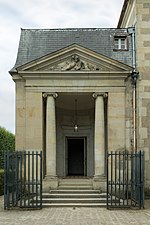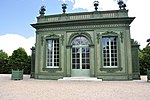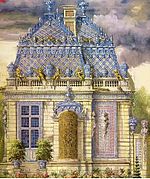Petit Trianon
1768 establishments in FranceBuildings and structures in VersaillesHouses completed in 1768Pages with French IPAPalace of Versailles ... and 2 more
Palaces in FranceRoyal residences in France

The Petit Trianon (French pronunciation: [pəti tʁijanɔ̃]; French for "small Trianon") is a Neoclassical style château located on the grounds of the Palace of Versailles in Versailles, France. It was built between 1762 and 1768 during the reign of King Louis XV of France. The Petit Trianon was constructed within the park of a larger royal retreat known as the Grand Trianon.
Excerpt from the Wikipedia article Petit Trianon (License: CC BY-SA 3.0, Authors, Images).Petit Trianon
Cour du Petit Trianon, Versailles
Geographical coordinates (GPS) Address Nearby Places Show on map
Geographical coordinates (GPS)
| Latitude | Longitude |
|---|---|
| N 48.815639 ° | E 2.109675 ° |
Address
Le Petit Trianon (Château du Petit Trianon)
Cour du Petit Trianon
78000 Versailles, Notre-Dame
Ile-de-France, France
Open on Google Maps











